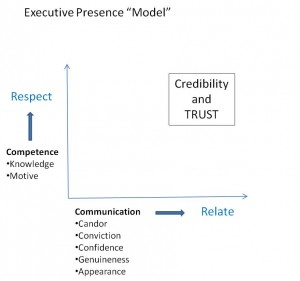 Numbers can be your greatest ally in large B2B sales, because they have a certain sense of concreteness that carries great weight in the minds of decision makers. The mere use of numerical data in a sales call or presentation sends important signals to the audience. It tells them that you are competent—you have solid information to back up your sales pitch. It tells them you are prepared, because you have taken the time to gather the data.
Numbers can be your greatest ally in large B2B sales, because they have a certain sense of concreteness that carries great weight in the minds of decision makers. The mere use of numerical data in a sales call or presentation sends important signals to the audience. It tells them that you are competent—you have solid information to back up your sales pitch. It tells them you are prepared, because you have taken the time to gather the data.
There are people who will tell you that only hard numbers count in sales—that if it can’t be measured, it does not exist. Hard numbers are those that are directly measurable; soft numbers are difficult to measure or too intangible to really count.
That advice may have contained more truth in previous days, when value in the economy consisted principally of things, but in today’s knowledge economy following that advice will cause you to leave huge amounts of value on the table. We’ve reached the point in our economy today where the value of intangible assets is almost equal to that of tangible assets, and the trend is sure to continue. In today’s increasingly intangible world, perception carries greater and greater weight, and effective salespeople know how to use it to their advantage.
Most salespeople are well aware of the importance of reading their customers’ annual reports, but very few read beyond the Chairman’s Letter. As a result, they often miss one of the most important sources of information in the entire report: Management’s Discussion of Results.
If you wanted to assess the quality of a sports team, would you rely on the head coach’s plans and predictions for the coming season, or would you look at his explanation of last season’s results? That’s the difference between the Chairman’s Letter and Management’s Discussion.
The rationale for reading this section is quite simple: as a consultative salesperson, your principal purpose in life is to help your customers improve their business results. Every “to” goal requires knowledge of the “from”, and this is the section with the most complete information about the starting point.
This section is required by the SEC, so it is not written by the public relations department. By law, management is required to report on results of operations, capital resources, and liquidity and to discuss conditions and uncertainties that may materially affect their business. That means that you will typically find more “hard” information about business operations which can be useful in understanding the issues the company faces.
Better information will help you be a better consultant by making you more credible, improving your questions, and helping you identify more business improvement opportunities.
Here are some of the categories of information found in this section:
Major Business and Financial Events Both in the Past and Anticipated for the Future
These business events are discussed in more objective language than in the chairman’s letter, usually with explanations tying these events to the results shown on the financial statements that follow. For example, revenue increases (or declines) will usually be explained in terms of different product lines, price increases or volume growth, or geographical expansion. Often, when adding up all the revenue increases discussed, you will find that they total more than the total revenue growth. This can only mean that other areas not discussed had declines. That’s a way to read between the lines to find areas where there could be room for improvement or concern on the part of the company. If it is your job to solve problems for your customers, that job sometimes means uncovering the problems that they will not readily acknowledge.
Acquisitions and Divestitures
When evaluating revenue growth or decline, you must be aware if any dramatic changes in revenue are the result of fundamental changes in business operations, or merely the result of new companies having been acquired or divested during the year. If the change is due to acquisition, it may suggest a possible new source of business for you within your existing customer. If the change is caused by alterations in the company’s strategies, its execution of those strategies, or its markets, you can be sure these conditions will be uppermost in the minds of your customers, and you should be aware of them.
Business strategies
The CL often discusses business strategies, and the MD provides measures of progress toward achieving them. Since individual businesses or strategies will not show up in the consolidated financial numbers, this section is often the only place to find information about specifics. For example, I recently worked with a company that has proclaimed a very ambitious revenue target by a certain date, and by close reading, I was able to discern that they are highly unlikely to reach the target without making significant changes in their current sales practices.
Explanation of operating results
The final numbers you read in the financial section are very general summaries of literally millions of transactions, decisions, and business processes which occurred during the year. The explanation of operating results will help you understand the main factors which impacted revenue growth. For example, in a retail operation, was growth caused by opening new stores, or more productivity per store? Did its revenue grow more or less than its competitors’? How was revenue growth impacted by acquisitions or divestitures? Did growth come from shipping more units, charging higher prices, or some combination?
Details of operating results by geographic segment or business unit
Except when dealing with the most senior level management, most of the individual buyers you will work with are concerned with their particular patches. Management’s discussion frequently provides the detail that is not discernible in the consolidated numbers.
Key Business or financial measurements
One of the best ways to show that you’ve taken the time to understand your customer’s world is to use their own company-specific measurements. These often have more meaning to your buyers than goals over which they have little control, such as earnings per share.
In a competitive arena such as complex system sales, the winners are those who are willing to go just a little deeper and work just a little harder than their competitors. Read the Management’s Discussion section to get a leg up on your rivals.
It seems like everyone has been beating up on solution selling recently, so I’d like to join the fun and kick it while it’s down.
That may not sound fair, but I have good reason to dislike the phrase. The idea is a good one—but most salespeople hear the cliché and forget the true meaning behind it.
Those who view it most superficially fall into the trap of thinking don’t realize that calling your product a “solution” does not automatically make you a solution provider. I once saw a sign above the door of a deli in New York which touted its “lunch solutions.” Believe me, it did not make the lunch taste any better. Salespeople aren’t the only ones guilty of this; it also seems to have infected everyone who writes marketing collateral.
Those who sort of get it are a little better. They know they have to ask questions to understand the customer’s problems, probe further to get the customer to understand the implications, and then help the customer arrive at their true needs. The only problem is, they tend to view questions as a means to make a hole to shove their solution in. Once they have reached a sufficient size hole that is close to the right shape, here it comes, ready or not.
Those who truly get the idea of solution selling also probe to understand needs, but they don’t stop at the surface. When the customer describes a problem that appears to be a fit for their solution, they make the effort to go deeper, because they know that in the long run, a band-aid solution that merely covers up symptoms is going to lead to problems down the road, for both the seller and the buyer. Rather than focusing immediately on implications, they drill down into diagnostic questions, to make sure they understand the root causes of the problem.
Sometimes they don’t get the answer they want, and lose the immediate sale by telling the customer that their own solution is not the right one for them. Sometimes, their diligence is rewarded by uncovering a larger and more significant opportunity.
Either way, they gain respect and trust that pays off in the long run. More importantly they maintain their own self-respect as professionals who have the customer’s best interests in mind.
Sales professionals know that the true spirit of solution selling requires them to slow down, worry much less about getting to the solution, and focus more on the problem. They know that if the diagnosis is correct, the prescription follows naturally.
Ironically, slowing down often results in faster sales, because when the buyer sees that they are sincerely focused on understanding the right problem to be solved, their trust and comfort level go way up.
Whether you’re trying to sell important ideas internally, or complex solutions to customers, chances are you’re going to have to convince a high-level audience at some point. To the uninitiated, this can be pretty intimidating, unless they can figure out a way to cloak themselves in that indefinable aura called “executive presence”.
On the surface, it may seem difficult if not impossible to define exactly what executive presence is. We may be left in the position of Justice Potter Stewart when he said of pornography: “I know it when I see it.”
Yet, if you define it properly, it then becomes possible to deconstruct and examine the elements that contribute to executive presence. In Aristotle’s Rhetoric, ethos was one of the three pillars of persuasive argumentation. Ethos is a quality of the speaker that determines whether the audience believes and trusts them. It is the impression created by your reputation, behavior, and appearance that adds to the persuasive power of your presentation.
Ethos is also specific to the audience; every audience has a different view of what constitutes credibility. Mitt Romney would be very credible to an executive audience, but probably not so much if he were to speak to Occupy Wall Street protesters.
Putting those two ideas together, we will define executive presence in this chapter as reputation, behavior and appearance that creates a positive feeling of credibility and trust in you among an executive audience.
That definition allows us to create a model that captures the ideal elements of executive presence, as shown in this figure.
On one side of the chart is competence: do you know what you’re talking about, and do you apply that knowledge and ability with their best interests in mind? If you can do that, we will respect you and your message.
Competence is not enough, though, if you can’t communicate effectively. If they can relate to you personally, they are much more likely want to listen to you. Here we see five qualities that make a difference in how executives perceive you: candor, conviction, confidence, genuineness and appearance.
Just like any other model, it’s a simplification of reality, but it allows us to isolate specifics that we can work on. Let’s define each of these essentials:
- Knowledge: Do you know what you’re talking about? For many, their reputation and credentials are an advance signal of their knowledge. If someone is introducing you, have them tout your credentials, so you don’t have to come across as boastful or defensive. Otherwise, you can subtly signal your credentials through your stories, examples and questions.
- Motives: Do you have my best interests at heart? You can be the smartest person in the room but if they don’t trust your motives anything you say will be immediately suspect. The best situation is to have no motives other than the good of your listeners. If you are completely disinterested—you have nothing to gain if the listener does as you advise, your credibility goes sky-high. But of course, that’s not possible to do as a salesperson. They know you’re there to sell them something and that you benefit if they buy. So, don’t try to hide it; see #3 below.
- Candor: Do you tell it like it is? Sophisticated audiences prefer two-sided arguments, so they will appreciate a speaker who candidly discusses disadvantages and weaknesses, or who is open about their motives.
- Conviction: Do you believe it? This is probably the most important element of all in projecting credibility. Your listeners may not agree with you, but they will respect and appreciate anyone who clearly and strongly believes in the proposal they are presenting. Don’t be afraid to let your conviction show through. Conviction is not the same as passion, which can be viewed with suspicion at executive levels.
- Confidence: Are you confident? As social beings, humans are exquisitely attuned to the relative power between individuals, and confident language and demeanor are our principal tools for expressing our power, so it’s important to be aware of how your speech patterns and demeanor affect your persuasiveness. As to speech patterns, be concise and avoid power leaks, such as hedges and excessive filler words. For a confident demeanor, follow the advice your mother taught you when you were very young: “Stand up straight, look people in the eye, and smile”.
- Genuineness: Are you real? People want to relate to you as a real person. It does not mean “letting it all hang out” and being completely transparent and honest. It means presenting your best self for that particular situation. Be friendly and professional, and act like you’re excited to be there.
- Appearance: Do you look the part? Even though we’re all familiar with the old saw that you can’t judge a book by its cover, we all do. In fact, in our increasingly distracted society, we are probably less likely to take the time to look past the cover if it does not attract us. It’s the same with your presentations: the world is not a fair place, and the unfair fact is that attractive people are more likely to get their way. While you can’t control your physical looks, you can dress professionally, pay attention to your grooming, and make sure that all accessories, such as slides and handouts, are professional and well-designed.
If you can project these qualities, you should easily be able to project executive presence, even if you aren’t tall, grey-haired and square-jawed.






